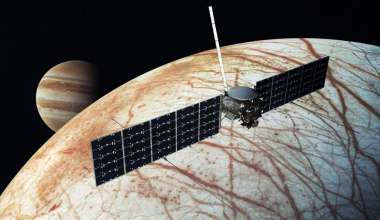Aerospace continues to solve space’s toughest challenges. A team of engineers and scientists have developed a novel technology, called the Autodynamic Flexible Circuit, that will enable new adaptable and resilient approaches for space robotics, satellites and other innovations for space exploration and operations.
While conventional flex circuits have been used in spacecraft for decades, they don’t move on their own. They’re either static or have to be moved by external forces. While not useful for every application, combining a flexible circuit board with the actuator it powers creates new options and affords greater adaptability for some and allows the exploration of new concepts with drastically reduced volume and mass.
As the scope and scale of space missions and architectures continue to expand, more agile and adaptable solutions enabled by advancements like the Autodynamic Flexible Circuit will be critical for the future. One example could be the possibility of new concepts and designs that address orbital congestion and space debris removal.
“We can't really do that with the old style of robots that we've been building,” said Jerry Fuller, Senior Engineering Specialist at Aerospace. “We need things that are lighter, nimbler, faster, better. This may be an approach to doing that so we can make a spacecraft that is something that can address some of the nation's and the world's challenges with regard to space.”
Stepping Outside the Box: Adaptable Flex Circuits
The Autodynamic Flexible Circuit is a fundamental shift in approaching space robotics moving from traditional static circuits with boom-and-joint designs, which tend to be heavy, complex, and expensive. While rigid and linear flex circuits can be found in technologies like smartphones, digital cameras and even space robotics, what makes the Autodynamic Flexible Circuit unique is its ability to support and articulate itself, enabled by materials in the wiring.
This allows it to change its entire shape as needed while still maintaining the integrity of the flex circuit. The Autodynamic Flexible Circuits are composed of standard flex circuit substrates with stitching made from shape memory alloy actuator wire, which contracts when electricity flows through it. As for any standard flex circuit, Autodynamic Flexible Circuits may incorporate technologies such as sensors, cameras, heaters, LEDs, and more, just like traditional robots.
“It's made from the same materials as ordinary flex circuits but has a shape memory alloy wire laced through it in such a way that when we run a current through the wire and it heats up, it causes a rather dramatic shape change,” said Fuller. “That shape change can be controlled so that we can use it as a robot arm. We can even make a shape-changing spacecraft out of this or point or shape an antenna. This would be enabling for over-the-horizon concepts like NASA’s Brane Craft, a shape changing membrane-spacecraft.”
A Multitude of Applications
With their vast potential for application, one of the challenges of the project is narrowing down the focus of Aerospace expertise on the most promising avenues. At face value, the Autodynamic Flexible Circuit has significantly less mass than its predecessors. Being virtually two dimensional, it also allows many to be stored in one place. This means it can accomplish the same task and more without requiring nearly as much mass or volume, which helps to reduce fuel consumption of the space vehicle and extend mission life. Its ability to change shape on command also means that space operators can have more flexible control of their robotics. And by eliminating complicated mechanisms in place of simple systems built from widely available flex circuit and shape memory alloy parts, this technology allows programs to move faster and fly more proliferated systems at lower costs.
“I think that the Autodynamic Flex Circuit allows for an approach in space that really lets go of the heavy structures and mechanisms that may be required on Earth to accomplish a whole lot more, with much less mass,” said Dr. Todd Sheerin, Senior Project Engineer for Developmental Prototypes & Projects at Aerospace. “I'm really excited to see the new opportunities we can chase after with this kind of technology.”
Moving the nation’s space capabilities forward starts with innovative ideas, building on the way circuits were always used, and looking towards new ways the Autodynamic Flexible Circuit could be utilized in upcoming missions.
“I'd like to see a new class of robotics come out of this, one that stores flat, goes out to wherever it needs to go, and then takes shape and does so with a grace and dexterity that isn't available today,” said Fuller.




